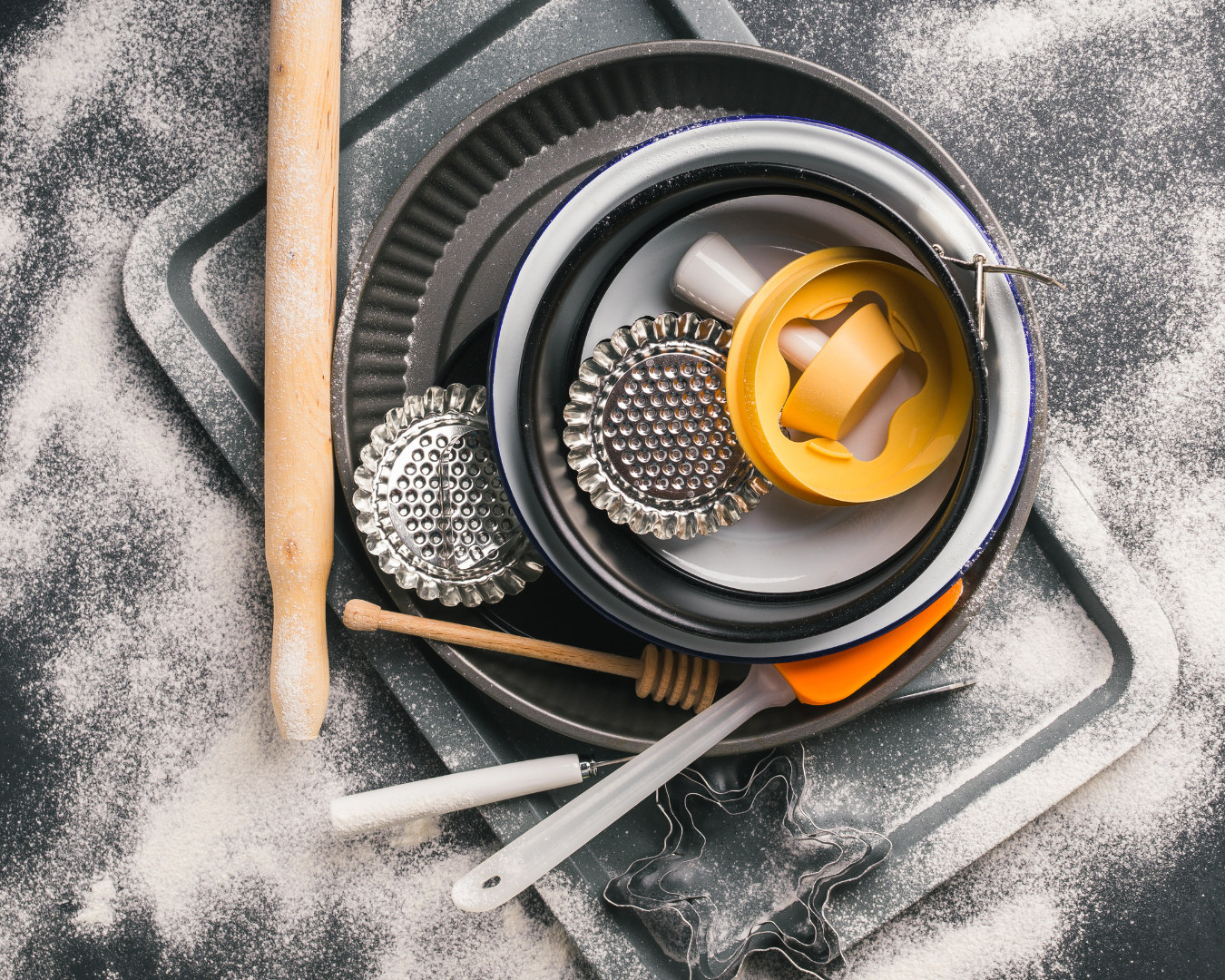Baking Basics: Tools and Tips for Success
Baking at home can be a rewarding and delicious hobby, but it can also be a bit daunting if you’re just starting out. Whether you’re aiming for the perfect cake, cookies, or bread, having the right tools and techniques at your disposal is crucial. Here’s a guide to help you get started on your baking journey with confidence.
Must-Have Baking Equipment
- Measuring Tools
- Measuring Cups and Spoons: Precision is key in baking. Use dry measuring cups for ingredients like flour and sugar, and liquid measuring cups for milk or oil.
- Kitchen Scale: For more accurate measurements, especially for flour and other dry ingredients, a digital kitchen scale is invaluable.
- Mixing Bowls and Utensils
- Mixing Bowls: Have a variety of sizes on hand, preferably made of glass or stainless steel.
- Whisks, Spatulas, and Wooden Spoons: Essential for mixing, folding, and scraping batter.
- Baking Pans and Sheets
- Cake Pans: Invest in a couple of 8 or 9-inch round cake pans.
- Baking Sheets: Rimmed baking sheets are great for cookies and roasting vegetables.
- Loaf Pan: Necessary for bread and pound cakes.
- Electric Mixer
- Hand Mixer or Stand Mixer: A hand mixer is great for most tasks, but a stand mixer can make baking more efficient, especially for bread doughs and large batches.
- Rolling Pin and Pastry Mat
- Rolling Pin: Essential for rolling out doughs for cookies, pies, and pastries.
- Pastry Mat: Helps to prevent dough from sticking and makes cleanup easier.
- Oven Thermometer
- Oven Thermometer: Ensures your oven is at the correct temperature, which is critical for consistent results.
Ingredient Substitutions
Sometimes you may find yourself missing an ingredient. Here are some common substitutions:
- Baking Powder
- Substitute: For 1 teaspoon of baking powder, use ¼ teaspoon of baking soda plus ½ teaspoon of cream of tartar.
- Buttermilk
- Substitute: For 1 cup of buttermilk, use 1 cup of milk plus 1 tablespoon of lemon juice or vinegar. Let it sit for 5 minutes before using.
- Eggs
- Substitute: For 1 egg, use ¼ cup of unsweetened applesauce or mashed banana. For binding, use 1 tablespoon of ground flaxseed mixed with 3 tablespoons of water (let it sit for 5 minutes).
Techniques for Perfect Cakes, Cookies, and Bread
- Cakes
- Room Temperature Ingredients: Ensure butter, eggs, and dairy are at room temperature for better mixing.
- Don’t Overmix: Overmixing can lead to dense cakes. Mix until just combined.
- Even Layers: Use a kitchen scale to divide batter evenly between pans.
- Cookies
- Chill Dough: Chilling cookie dough helps prevent spreading and enhances flavors.
- Uniform Sizes: Use a cookie scoop to ensure even-sized cookies for consistent baking.
- Baking Sheets: Use parchment paper or silicone baking mats for easy removal and cleanup.
- Bread
- Proper Kneading: Knead dough until it’s smooth and elastic to develop gluten.
- First and Second Rise: Allow dough to rise until it doubles in size for a light texture.
- Steam: Adding steam to the oven (a pan of water or misting the oven) helps create a crusty exterior.
Baking is a delightful blend of art and science. By equipping your kitchen with the right tools and mastering essential techniques, you’ll be well on your way to creating delicious baked goods. Don’t be afraid to experiment with ingredient substitutions and new recipes.

